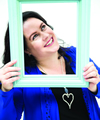Aestheticians should always take their role in the well-being of clients very seriously. Massage therapists are also privy to seeing clients in a more relaxed environment, and often see clients more frequently, making them able to notice changes inclients’ skin. Any seasoned electrologist has had the experience of noting the difference in a clients’ hair growth to learn months later that they are clinically in menopause. Similarly, skin care professionals are often the first to notice suspicious lesions on clients and alert them to it without causing alarm.
One important point to teach aesthetic students is to remember to take their eyes off clients faces. This gives a lot of information that can be key in assessing the underlying causes of skin conditions and disorders. It is an excellent habit to note potential abnormalities on clients’ arms, hands, legs, backs, and chests. Of course, skin care professionals are not aiming to diagnose possible skin cancers.Rather, they should be gathering information related to risk factors totreatment modalities and see if we note how well a skin may heal, the risks for scaring, and the risk for pigmentation changes.
Skin care professionals should advocate the importance of building strong alliances with the medical community.In this realm exists an opportunity where it is critical to be proactive for our clients and notice, notify, and refer when suspicions surround a lesion that is not typical.
SKIN AWARENESS
Skin care professionals should simplify the process. Start with awareness of what is seen on a clients’ skin. Document what is seen. Notate anything that looks unusual, suspicious, or needs another look at the clients next appointment. If a skin care professional has visual diagnostic equipment, they should capture what they see.
TELL THE CLIENT
If after going through the ABCDE rules and discovering something worth mentioning, communicate to theclient without causing alarm. This may be difficult, but the professional needs to lead the way with a calm demeanor.
It is not in a skin care professional’s scope of practice to diagnose, butit is essential to be straightforward with clients. Borrow words from colleagues in this is area. Here is an example of a script to break the news to clients,“Mrs. Doe, the lesion in thisarea looks suspicious. I am not diagnosing this at all; however, I want to encourage you to have this checked out by a doctor or dermatologist for a diagnosis to have peace of mind. Let’s be proactive and ensure this is nothing to worry about.” Skin care professionals should also share their recommendations with the clients in regard to a dermatologist or the appropriate professional.
Intake forms should ask who the client’s physician is. It is crucial information in case of emergencybut also when skin care professionalsare looking to refer. Practitioners may notice the same group of physician’s names come up in their client data.These are the medical professionalsto build strong referral systems with. If diagnostic images are taken, offer to prepare those for the client to show the health care provider. If skin care professionals do written referrals or keep notes on their clients, then they should write the referral with all the relevant information.
The process for this will depend on the location. In the United States, clients can self-refer to specialists in many instances. In Canada, a client must obtain a referral from their primary care physician, so they have to take the information to their physician and ask for a referral to a dermatologist. Follow the standard referral chain and arm clients with documentation, such as diagnostic images if obtainable.
In the day to day in the spa, it can be easy to overlook the minute details of clients’ skin. However, skin care professional’s visual recognition and communication may make all the difference in a client’s overall health. It is critical to always stay aware in order to truly continue to be a quality service provider.
 René Serbon is an international skin expert. She started her education focusing on business studies (marketing) and then moved to aesthetics. Serbon’s mission as an industry consultant and educator is to teach other industry professionals to empower the public to obtain healthy skin at any age without the need for intensive and harsh treatments. She began studying in New Zealand and completed training in beauty therapy (called aesthetics in Canada and the United States), as well as electrolysis through the New Zealand Institute of Electrolysis and Beauty Therapy. Serbon sat for international exams and is a diplomat of both CIBTAC and CIDESCO. She completed post-graduate training in laser, IPL, and the Pastiche Method of Advanced Skin Analysis, for which Serbon was later an honoree as a Pastiche recognized educator. She also serves on the board of education for the International Association For Applied Corneotherapy. reneserbon.com
René Serbon is an international skin expert. She started her education focusing on business studies (marketing) and then moved to aesthetics. Serbon’s mission as an industry consultant and educator is to teach other industry professionals to empower the public to obtain healthy skin at any age without the need for intensive and harsh treatments. She began studying in New Zealand and completed training in beauty therapy (called aesthetics in Canada and the United States), as well as electrolysis through the New Zealand Institute of Electrolysis and Beauty Therapy. Serbon sat for international exams and is a diplomat of both CIBTAC and CIDESCO. She completed post-graduate training in laser, IPL, and the Pastiche Method of Advanced Skin Analysis, for which Serbon was later an honoree as a Pastiche recognized educator. She also serves on the board of education for the International Association For Applied Corneotherapy. reneserbon.com